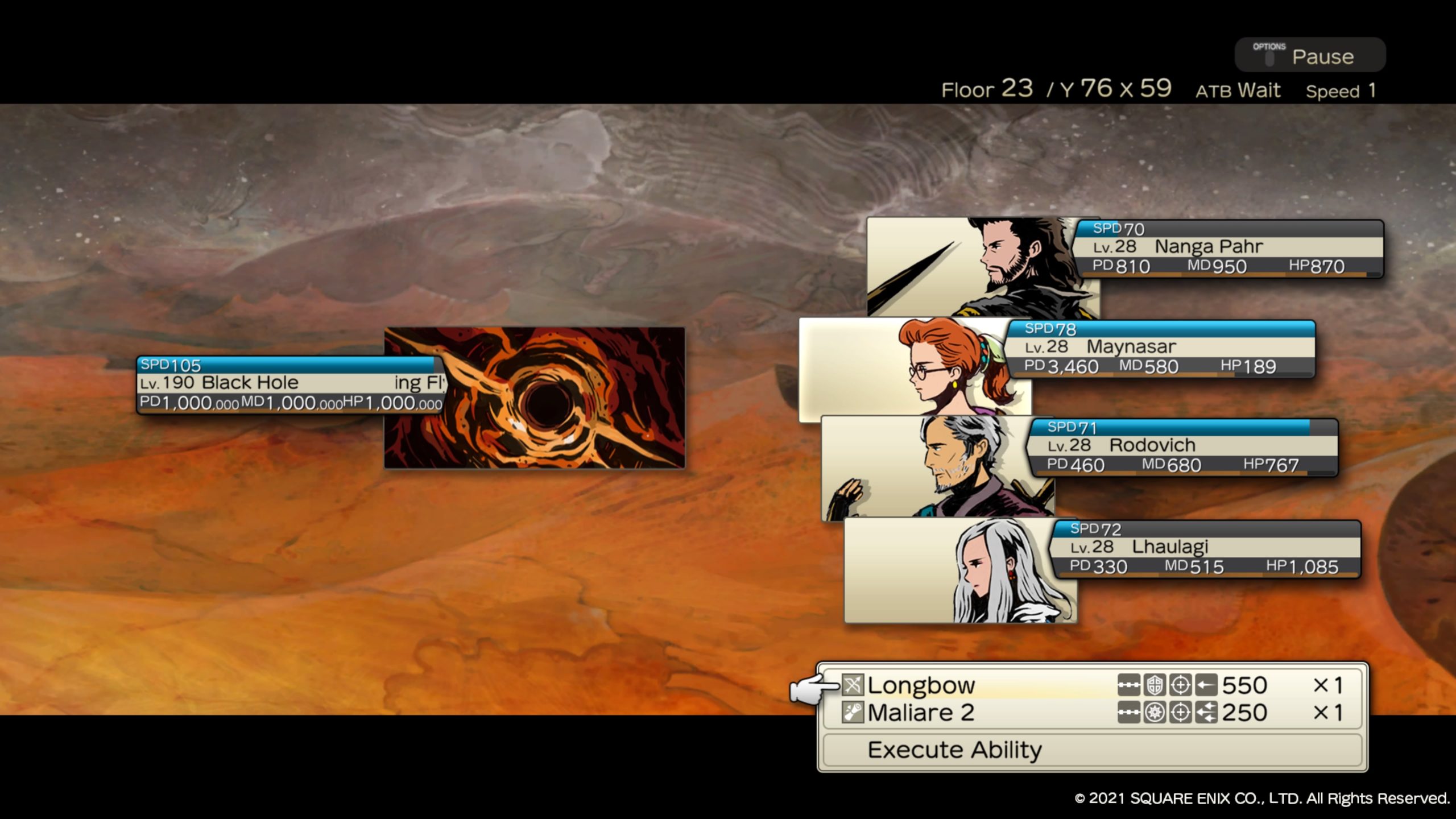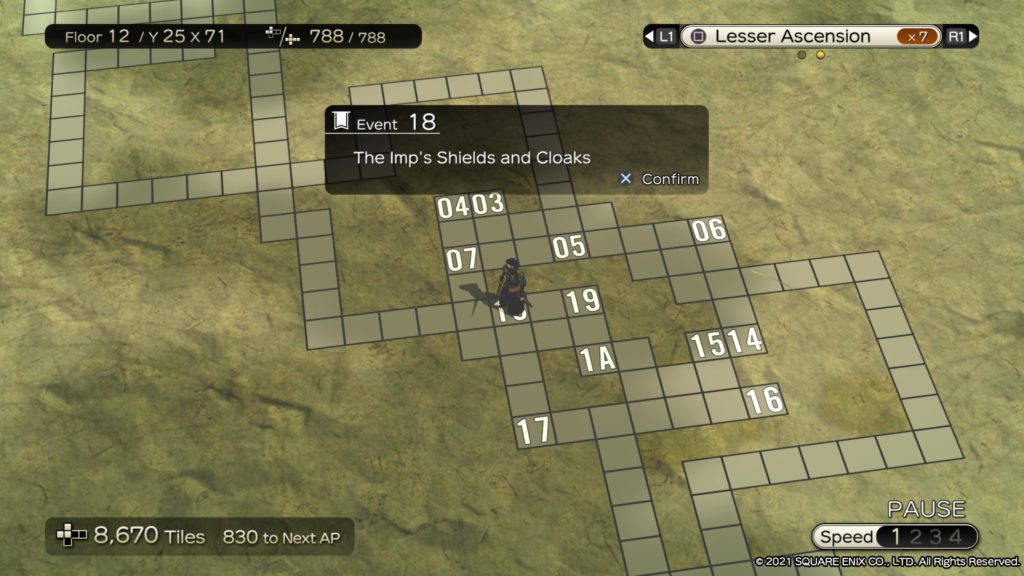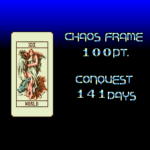DM: You see an encounter before you
Party: I don’t recognize this one. Hmmm. Okay, everyone, brace up, we’re heading in!
DM: It is a black hole. It immediately begins to suck you in.
Party: Run! RUN!
DM: You can’t get away. You are sucked in, everyone dies. Roll up a new party.
After my original party was sucked in by a black hole, and I’d taken a new character with no experience or equipment down through the labyrinth to do a CR, I got to thinking how I would defeat the Black Hole next time I encountered one. Use the stopwatch we got to keep resetting its Action Time Bar (ATB)? Try and petrify it?
I see a lot of reviews ragging on Dungeon Encounters for stripping out story, world, graphics, animation and all that we’ve come to expect from our JRPGs. But for my money, Dungeon Encounters finds beauty and challenge in its stark simplicity.
An labyrinth of a hundred floors mysteriously appears one day; the local Academy is hiring adventures to explore the depths. This has been going on for some time; many adventurers have been lost far beneath the surface. As your first action, you will assemble a party from the adventurers gathered at the entrance to the labyrinth.
Note: You will see in the Party Composition screen that there are some other adventures on the top level but not yet at the Academy. Go get them and bring them. If you wipe and need to make a new party, only those adventurers actually at the Academy — location 00 — will be available.
You’re not given any starting money, so the various vendors (a white two digit number starting with “1”) have nothing to sell you, but you can see from the items on offer that equipment gets more powerful over time, but doesn’t offer much variety in battle. Most of the really good stuff you will find by solving puzzles and opening treasure chests.
Note: Numbers that have letters in them? Dungeon Encounters uses base 16 — the digits 0-9, and the letters A-F, representing the values 10-15.
On the surface, Dungeon Encounters is a simple game. Useful locations are in white; encounters are in black. Everything is marked with a number that you can look up in your battle log (for encounters) or event log (for useful locations) to see what it is, once you have seen it once, or found information about it on the map.
I once fought a treasure goblin (FC). When it started stealing money from me — 10,000 gold at a time — I wasn’t worried, because I didn’t have that much. I was wrong. By the time it ran away, undefeated, I was more than 30,000 gold in the hole. It took hours to earn my way back to zero.
Both your party and the monsters have a few simple battle numbers:
- Physical Defense — you cannot be harmed by physical attacks until your physical defense is broken. This regenerates after each encounter.
- Magical Defense — you cannot be harmed by magical attacks until your magical defense is broken. This also regenerates after each encounter.
- Health — when this hits zero, you are KO’d. This does not regenerate after each encounter, and certain attacks ignore defense and harm health directly.
- Action Time Bar (ATB) — once this gauge is full, you can act. Speed makes this fill faster. Enemies can also attack this.
Additionally, there are status conditions — you can be poisoned. You can be swallowed. You can be banished. You can be petrified. Spells might bounce of enemies. Enemies can be flying and only able to be hit by ranged attacks.
Once, my entire party was petrified. I had to bring a new adventurer to find a gorgon altar, feed it the exact coordinates of my party of statues, hope I got the coords right, then descend further to find the party, and swap places with them. Sometime later, I went back and found all the level 1 and level 2 adventurers I’d abandoned after CR and brought them back to the main town on the surface.
There is an additional stat called Proficiency Points (PP), that limit what you can equip. Every spell and piece of gear is assigned a PP value, and you can equip items to that level. Potions dropped by the monster and occasionally found can grant new PP, and characters get some more when they level, along with the increases you would expect to the other stat. Find a super sword in the mouth of a dog*? That is going to take a pile of points for you to equip. (* This is a thing that actually happened)
Additionally, the party can find and equip Abilities. These are separated into Battle Abilities, that are only available in battle (such as healing, resurrection, restoring magical and physical defense, and protection against various status conditions) and map abilities (such as finding wandering adventurers, looking for unvisited areas of the map, teleporting around the map or between levels, and so on).
Similar to PP, abilities require ability points — AP — to slot, and this can only be done at an Ability Altar (03). Most abilities can only be used a certain number of times, before they must be refreshed at an Adventurer’s Rest (04). The game is careful about giving you just a few fewer points than you need slot all the useful abilities. If you’re clearing a map, maybe you don’t need to abilities to change dungeon level or look for wandering adventurers so much. Ability points are granted for visiting unmapped squares on the map.
75% of the encounters are just going to be breaking a monster’s defense and burning down their health. 25% are going to make you sweat. The items you find and equip will synergize to make previously unthinkably deadly encounters manageable. Math puzzles will lead you on wild goose chases across the map; I have a solution that I think was targeting a location a few levels below my deepest delve. I’ll have no way of knowing if my solution was correct until I get there.
Also, I’m looking for a hidden square between two parallel corridors. I saw a map fragment which leads me to believe I will find something there.
Dungeon Encounters is a “just one more battle”-type game. Every new encounter could be the black hole, the treasure goblin of indebtedness, the monster that is going to do something new that requires a new CR to the depths to drag out the corpses of the previous party.
There is no story, no dark lord, no world-ending evil, just you and the monsters and finding new synergies between gear and abilities. Dungeon Encounters’ deep mechanics are hidden by its outward simplicity, but if you ever spent late nights huddled over a keyboard playing Wizardry or Eye of the Beholder or Might and Magic or Bard’s Tale or others of those great, addictive monster battling RPGs of the past, then you will love exploring that kind of world again, as I have.
I’ve just started on the 30s levels, so I have no idea where this game ends up. I’m there until I get to floor 99, though.








Where the heck did this game come from? I’d never even heard of it until it released. And I had no idea what it was from the trailers and such, so thank you for a very good explanation. Or maybe not “thank you” because now I want to play it and I already have a full plate of games in my backlog!!
I have absolutely no idea. I saw a screen shot and was intrigued, but when I got into it and found out it was those old 90s computer RPGs come back to life, I was addicted. Reviews for the game have been all over the place, but for gamers who played those classic games and want to feel that excitement again, it’s a must buy.
I believe it came out of nowhere and was announced during Square’s presentation at TGS this year.
As soon as I saw the names attached and watched the trailer for this I know it was for me. I picked it up on Switch and will be driving in soon.
I was super close to buying this after you mentioned it the other day. Had it in my cart, mouse pointer poised over the ‘Buy’ button and everything.
The thing that put me off the most and brought me back from the precipice was the discovery that there is essentially no difference between one character and another beyond their name, portrait and starting state.
I can happily embrace the simplification elsewhere, but the lack of classes or even perhaps more simply some stat-based differentiation leaning certain characters toward either physical or melee was a deal-breaker…
…I think…
We’ll see.
But for now it is.
I have read that the characters start off with minor stat differences, but I think you’re largely correct. Those people who rush through the game will meet up with wanderers that have better levels, stats and gear, but not me — I go through so slowly that, when I meet them, they usually are not better than what I have, though I do strip them of their gear.